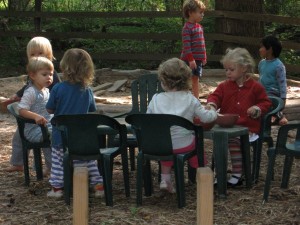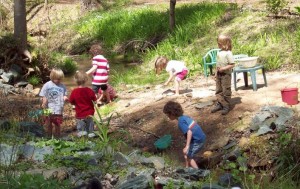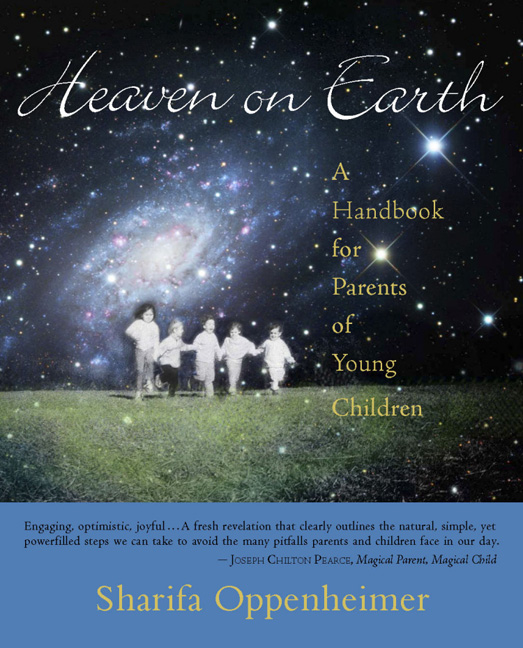Movement and brain function: did you know that when we rock side to side, this movement stimulates the relaxation centers of the brain? And when we rock forward and backward, the focus and intention centers are activated? So, when the parent sits and rocks the baby in a rocker, the baby is relaxed and the parent is focused…..amazing grace!
Monthly Archives: January 2010
Circle Time is Great Fun and Great Brain Development, too.
I spent a good amount of time over the Winter Break studying the latest brain-development research. All of the research I worked with supports The Rose Garden’s basic philosophy: plenty of outdoor time, a wide palette of sensory experience, the individual exploration of creative play and lots of artistic activities and stories. Perhaps most important, though, is the research that correlates the necessity of both fine and large motor movement with an intimate connection to sound and music.
I have an idea that I hope to pursue: I’d love to write a piece that describes detail by detail a typical day at The Rose Garden. Woven through this I will describe the research that explains the WHY of all the large and small experiences offered the children. This will take a while to accomplish! Meantime, here is a short video of today’s Circle Time and snack clean up for you to enjoy….joyful movement amidst a tapestry of language and song. Just what the Doctor orders!
Ooops…let me work on posting the video!
Let’s Talk About Play!
 The Rose Garden has a Parent Evening coming up on Jan 27th, and we will be talking about the necessity of children’s play. Join us, if you can, or drop me a note with your thoughts! Here is an excerpt from Heaven on Earth
The Rose Garden has a Parent Evening coming up on Jan 27th, and we will be talking about the necessity of children’s play. Join us, if you can, or drop me a note with your thoughts! Here is an excerpt from Heaven on Earth
We say that children “learn by doing.” This is a common way of saying that the learning process is a miraculous orchestration and integration of the entire body, moving a million tiny interconnected particles toward the “gestalt” that is meaning. Children think through movement and play. In movement and play the brain goes through all the complex processes of growth and learning. The main avenue through which the child perceives the world is the realm of the senses. Through the natural sensory input of play, the child actively makes the world his own, rather than remaining a passive observer. Neurophysiologist Carla Hannaford, author of Smart Moves, says, “The richer our sensory environment, and the greater our freedom to explore it, the more intricate will be the patterns for learning, thought and creativity. . . . Our sensory experiences, both external and internal, shape our way of imaging and therefore, our thinking.” It is the life force through which the young child plays that will grow eventually into cognitive thought.
If we watch a young child at play, we can see that through her constant sensory/physical interaction with the environment, she gains experience and understanding of the situation, of herself, and the relationship between the two. She comes to know herself, the world, and what flows between.
Through sensory-rich play, the child gains a certain mastery over her body, and her world. She also begins to understand the inner world of emotional experience. It is critical that, through play, the different areas of the brain that control thought and emotion begin to communicate. “The frontal lobe,” Hannaford writes, “is able to synthesize thought with emotion through . . . the limbic system to give us compassion, reverence for life, unconditional love and all-important play.”


